Arthur C. Parker, author of the first article, discussed the Third National Conference of Indians, which took place in Denver, Colorado on October 14, 1913. At this vent, political, religious, philosophic, and agricultural issues were discussed. Next, Dana H. Kelsey wrote about the current conditions and needs of the Five Civilized Tribes of…
Magazines
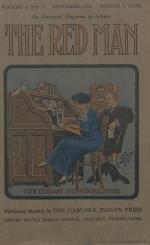
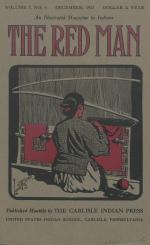
The issue began with an article, written by Joseph F. Anderson, about his study of the Navajo and their way of life. The next article, pulled from the New York Herald, discussed government attempts to work with Indians to reduce the cost of beef and fight the beef trust. In a piece pulled from the United Press News the commissioner’s attempts…
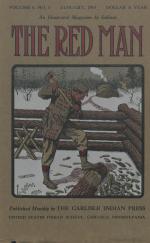
The opening article, written by George P. Donehoo discussed the famine that many Indians have faced in the past, and still continue to face. Next, Edna Dean Proctor wrote a poem entitled “Welcome to the Red Man.” Superintendent Moses Frieman, author of the next article, argued against the creation of universities only for Indians, and instead…
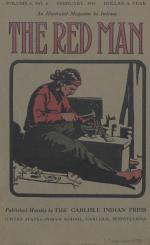
H. B. Peairs, author of the opening article, discussed the present and future of Indian education. Next, in an article pulled from Everybody’s, author Hasting McAdam wrote about the herding techniques of Indians. In the following article, Frederic Snyder argued his belief that Indians need to modernize themselves in order to succeed. Next, Edna…
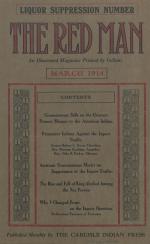
The first article, written by Cato Sells, the Commissioner of Indian Affairs argued that the greatest danger to Indians is alcohol. Tied to this, Senator Robert L. Owen wrote about the suppression of liquor traffic. Next, Sharman Coolidge covered the efforts to uplift the Indian’s through enforcement of liquor regulations. E. B Merrit,…
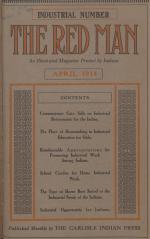
In the opening editorial comment section Commissioner Cato Sells and his industrial program were discussed. Next, E. B. Merritt wrote about industrial opportunities for Indians such as farming, handling of stock, dairying, and other industrial trades. Charles L. Davis, author of the following article, discussed which breed of horse was best…
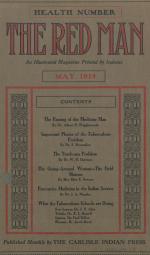
This issue of The Red Man covered the problem of Tuberculosis outbreak in Indian Nations. In the opening editorial comment section temperance and blood pressure amongst Indians was discussed. Dr. A. M. Wigglesworth, author of the first article, wrote about the passing of the Navajo medicine man. Next, E. B. Merrit discussed the major health…
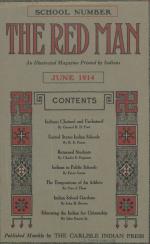
In the opening editorial comment section, Indians in public schools and the Carlisle Alumni Association were discussed. In the first article, former Carlisle Superintendent R. H. Pratt gave a history of how the school was founded and how its evolutions over 25 years. Next, H. B. Peairs of the U. S. Indian Service, discussed the reasoning and…
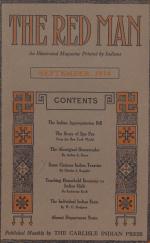
This issue begins with the press comments section. The Indian Appropriation Bill, which appropriated 1.5 million dollars from Indian funds to improve health conditions, education, and agriculture, was discussed. The next article, which was pulled from The New York World, discussed the Story of Spo-Pee, “the silent Indian”. Arthur L.…
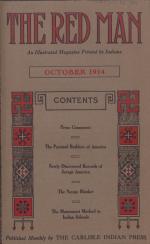
In the opening press comments Indian policies, both past and present, were discussed. The first article, written by Harry L. Wells, was about the mound builders of the Mississippi, who Wells claimed descended from the pyramid builders of Egypt. Superintendent Oscar Lipps, in the next article, explained the history of the art of weaving, which…
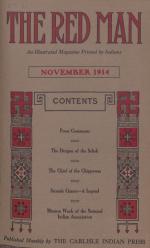
The press comments section covered a Supreme Court Case involving a group of Cherokees, who sought to recover interest on deferred payments. Arthur L. Stone, in the following article, told the story of the Dragon of Selish. Next, Domitilla wrote about the Stonish Giants who were defeated by the Shawnee. The following article, pulled from the…
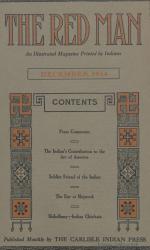
Superintendent Oscar Lipps opened the issue with a dedication to Gabe E. Parker, a Choctaw Indian who became the Superintendent of the Five Civilized Tribes. In the press comments section Canadian Indians, as well as the newest census were discussed. In an article pulled from the New York Post, General Hugh L. Scott who worked…
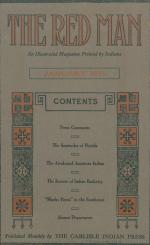
The opening press comments section compiled excerpts from various news outlets that discussed Indian affairs. In the first article, Minnie Moore-Wilson wrote about the oppression of the Florida Seminoles, and their rights. Arthur C. Parker discussed the memorial of the Society of American Indians. Next, Edwin L. Sabin wrote about the Pueblo…
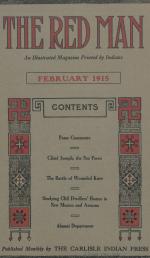
The press comments section opened with news articles about engineering feats of Indians. The first article, pulled from the Century Magazine, discussed Chief Joseph of the Nez Perce. Courtney Ryley Cooper, author of the next article, wrote about the Battle of Wounded Knee. The final article, pulled from the Boston Herald,…
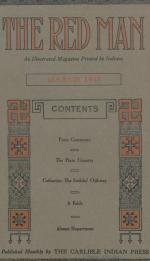
The opening press comments section included various articles, pulled from newspapers across the country, about American Indians. The first article, written by John Ris, wrote about "Paiute Country" in the Southwest. Next, Charles E. Waterman wrote about Catherine, a member of the Ojibway Nation. The next article, pulled from the Bennet County…
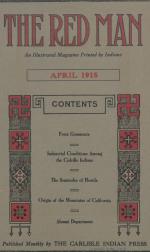
The issue opened with an editorial comment on the Everglade Seminoles and the desire to open the Colville Reservation to settlement. The press comments section followed. The first article, written by F. F. Avery, discussed the Colville Indians and their industrial approaches and practices. The use of funds was particularly notable in the…
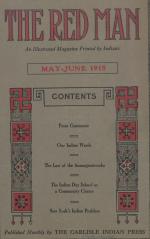
The press comments section opened the issue. Will M. Maupin wrote the first article in which he discussed the need for schools on Indian lands. Maupin referred to the Genoa Indian School in Nebraska as an example of excellence. Next, Charles E. Waterman discussed Metalluk, the last of the Ananagunticooks who used to roam the valley of the…
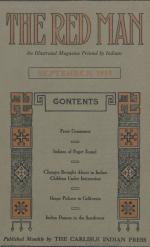
The opening press comments section contained brief articles pertaining to Indians, pulled from publications such as the New York Post, the San Francisco Chronicle, etc. The first article, written by Charles M. Buchanan, discussed the Indians living in Puget Sound. Next, in an article pulled from the American Museum Journal…
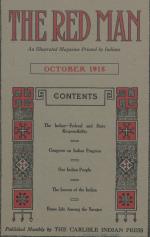
E. A. Allen, Superintendent at Chilocco Indian School in Oklahoma, discussed the need for state governments to acknowledge issues that Indians face. Next, in a general report from the United States Indian Service, the progress of Indians and what more can be done was covered. In the following article E. B. Linnen, Chief Inspector with the…
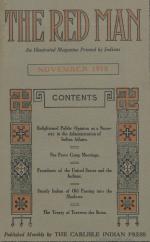
Superintendent Oscar H. Lipps argued that favorable public opinion of Indians was necessary for success in the Administration of Indian Affairs. Next, Mazie Crawford discussed the religious ritual of camp meetings of the Nez Perce. The following article, pulled from the Salem News, covered the stance different American Presidents took…
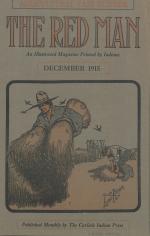
This issue focused on agriculture. The opening editorial statements covered "the Indian as a Farmer" and the ownership of land. The following press comments were pulled from publications such as The Outlook, The Oklahoman, South Dakota's Daily Republican, Christian Science Monitor, Minnesota's Duluth…
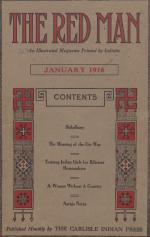
The first article, written by the Secretary of the Indian Rights Association M. K. Sniffen, detailed the case of Tse-Ne-Gat (Everett Hatch) and the resulting "Ute War" in Bluff, Utah. Hatch was charged, and later acquitted, of the murder of a Mexican sheepherder. The following article, "Training Indian Girls for Efficient Home Makers",…
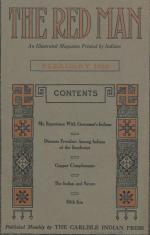
The first article, pulled from The Baltimore American, discussed tribal organization and rites of passage as reflecting nature. In the following article "My Experience with Geronimo's Indians in Arizona", pulled from the Overland Monthly, G. W. Miles wrote about a number of encounters with Indians while on a prospecting…
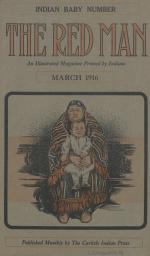
Articles in this issue appear under the title "Save the Indian Babies" and were written by doctors, physicians, and field matrons. In the opening article Cato Sells, Commissioner of Indian Affairs, called upon "Superintendents, Teachers, Physicians, Matrons, [and] Nurses" to improve efforts to lower the mortality rate, particularly among…
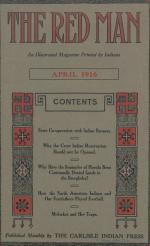
The first article, written by Robert Yellowtail the secretary of the Crow Indian Council, stated the many reasons the Council had voted against the opening of the Crow Reservation. In the following article, Minnie Moore Wilson wrote about the Seminoles struggles over land ownership in Florida. The article focused on many aspects of the issue,…
